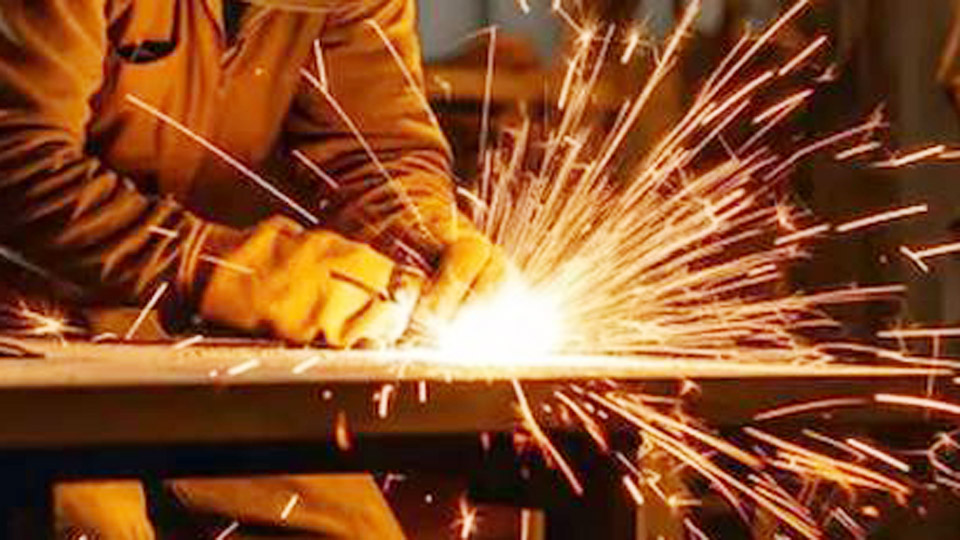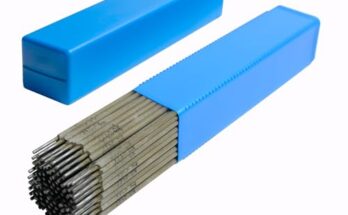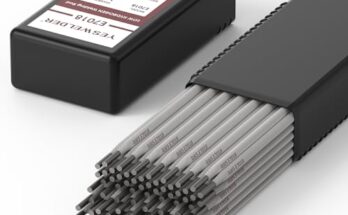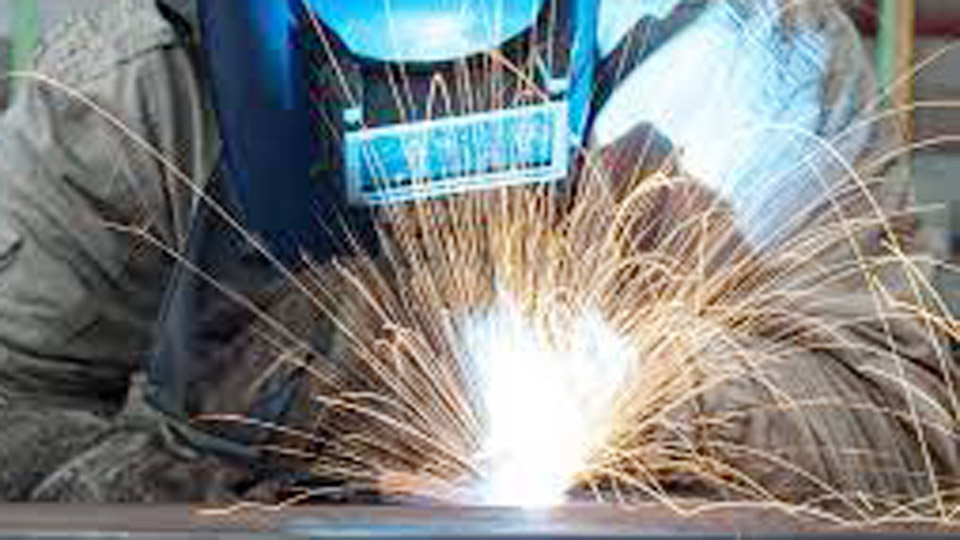I’ve worked in different welding environments, from small garages to large industrial shops, and I can’t count the number of times I’ve seen folks underestimate how important proper eye safety is during plasma cutting.
Your eyes are way too precious to take chances with. If you’re getting into plasma cutting or even thinking about it, this article is just for you.

Image by vevor
When I first picked up a plasma cutter, I was mesmerized by how clean and precise the cuts were. But that excitement quickly turned into concern when I realized how intense the light and sparks were. I had to pause, do my research, and invest in the right gear to protect myself—especially my eyes.
I’ll walk you through everything I’ve learned and experienced about what eye protection you need for plasma cutting. I’ll explain the dangers, the right type of eye gear, what to look for when buying one, and how to take care of your safety gear.
If you’re a hobbyist in your garage or a professional in a workshop, this article will give you real-world, experience-based advice on keeping your vision safe while plasma cutting. Let’s dive in.
Why Eye Protection Matters for Plasma Cutting
Plasma cutting isn’t just your average metal cutting method. It uses a high-velocity jet of ionized gas, or plasma, to slice through electrically conductive materials like steel, aluminum, and copper.
This process generates extreme heat, bright light, ultraviolet (UV) rays, and infrared (IR) radiation—all of which are harmful to your eyes.
Even a few seconds of exposure can lead to something called “welder’s flash” or photokeratitis. That’s essentially a sunburn on your eyeball. Not fun.
The pain feels like having sand in your eyes, and it can last for hours or even days. Plus, long-term exposure without protection can lead to permanent damage, including vision loss.
So yes, eye protection isn’t optional—it’s a must.
What Kind of Light Does Plasma Cutting Produce?
Plasma cutting produces a combination of intense visible light, UV rays, and IR radiation. Each of these poses its own risk:
- Visible Light: Too bright for the naked eye. It can strain your vision and temporarily blind you.
- UV Rays: Cause photokeratitis and long-term damage like cataracts.
- IR Radiation: Not visible, but can penetrate deep into your eyes and damage the retina over time.
When you’re shopping for eye protection, you want something that blocks or filters out all three.
What Eye Protection Should You Use for Plasma Cutting?
You need more than just basic safety glasses. The best eye protection for plasma cutting should include a proper shade lens, full-face coverage, and both UV and IR protection. Here are the main options:
Welding Helmets with Auto-Darkening Lenses
These are my personal favorite. A good welding helmet with an auto-darkening lens adjusts automatically to the brightness level of the arc. This means you can see your workpiece clearly when the torch is off, and your eyes stay protected when the arc starts.
Look for helmets with a shade range that goes up to Shade 9 to Shade 13, depending on the thickness of the material and the amperage you’re using.
Safety Goggles with Shade Lens
If you’re doing low-amp plasma cutting or working in tight spots, safety goggles might be enough—but they must have the proper lens shade. Don’t go below Shade 5, and preferably go higher if your cutter is above 40 amps.
Face Shields with Built-in Shaded Visors
Face shields can offer full face protection and are often used in combo with safety goggles underneath. This setup gives you dual protection, which is a great option if you’re working on heavy-duty jobs.
Flip-Up Welding Masks
Some old-school folks still love the flip-up design. They’re a bit bulky, but they do the job. Make sure you’re using a proper shaded lens.
Plasma Cutting Eye Protection Shade Chart
Here’s a quick reference table to help you figure out the right lens shade based on your plasma cutter’s amperage:
| Cutting Amperage | Recommended Shade |
|---|---|
| Below 20 Amps | Shade 4 – 5 |
| 20 – 40 Amps | Shade 5 – 6 |
| 40 – 60 Amps | Shade 6 – 8 |
| 60 – 80 Amps | Shade 8 – 10 |
| 80 – 100 Amps | Shade 10 – 11 |
| 100+ Amps | Shade 11 – 13 |
Keep in mind, these are recommendations. If your eyes feel tired or you’re squinting while cutting, it’s a sign you need a darker shade.
Relaxweex Welding Goggles Welding Safety Glasses Shade 5 IR Lens Cutting Torch Goggles Brazing Glasses for Men Eye Protection(Green)
- Wide Vision and Size: experience convenience with our welding glasses, measured at about 6.3 x 2.95 inches/ 16 x 7.5 cm (L x W), with a 180° viewing angle, you can enjoy the convenience of peripheral vision; The Shade 5 IR lens delivers a clear view, enhancing your performance and efficiency during various types and phases of welding
- Sturdy Material and Design: discover the resilience of our welding goggles, designed with a durable PVC frame structure, anti scratch, increasing resistance to sharp particles, ensuring longevity and resistance to challenging work conditions; These goggles, primarily green in color, are both stylish and functional, providing ideal performance for your welding needs
- Comprehensive Protection: the welding safety glasses offer protection against UV rays, infrared radiation, sparks, and debris, reducing the risk of eye damage such as flash burns; Your vision at work remains uncompromised, ensuring your safety in the workspace environment
- Comfortable and Adjustable Fit: featuring an adjustable elastic headband, our torch cutting glasses promise comfort and a proper fit tailored to individual needs, firmly fit your face; The option to adjust fosters an enhanced experience, allowing prolonged use without discomfort
- Diverse Industrial Application: these arc welding goggles are suitable for various work scenarios, such as light and medium gas welding, light, medium and heavy oxygen cutting, brazing, welding torch, dusting, sawing, mowing and more; Therefore, whether you are a novice or experienced welder, this tool ensures that it is versatile enough to cover most of your needs
Features to Look for in Eye Protection for Plasma Cutting
When choosing eye protection, don’t just go for what looks cool. Here’s what you should really be focusing on:
Shade Range and Adjustability
If you’re using an auto-darkening helmet, make sure it covers the shade range you need. Adjustable helmets let you work comfortably at different amperages without switching gear.
UV and IR Protection
Even if the lens looks dark, it doesn’t mean it blocks UV and IR. Always check the specs. A good helmet or goggles will offer full protection even when the lens isn’t darkened.
Lens Clarity and Viewing Area
The clearer the lens, the better your visibility and precision. A wide viewing area also helps you see more of your workspace without moving your head around too much.
Response Time
In auto-darkening helmets, response time is how quickly the lens darkens when the arc starts. The faster it reacts, the better it protects your eyes.
Comfort and Fit
You’ll be wearing this for long periods, so comfort matters. Look for lightweight designs with good padding, adjustable straps, and a snug fit.
Durability and Build Quality
Cutting metal isn’t gentle work. Your gear should be rugged enough to withstand bumps, sparks, and drops.
Compatibility with Other PPE
Make sure your helmet or goggles don’t interfere with your respirator, hard hat, or hearing protection. You want everything to work together smoothly.
Certifications
Look for gear that meets or exceeds ANSI Z87.1 safety standards in the U.S. This means it has been tested for impact, optical clarity, and UV/IR protection.
Some Mistakes People Make with Eye Protection
I’ve seen people make the same mistakes over and over again. Here are a few things you should avoid:
- Using sunglasses or tinted safety glasses instead of welding-rated lenses. Regular glasses don’t block harmful radiation.
- Choosing the wrong shade level. If it’s too light, you’ll strain your eyes. Too dark, and you can’t see your work.
- Wearing eye protection without side shields. Sparks can come from any direction.
- Not checking for scratches or damage. Damaged lenses can distort vision and reduce protection.
- Thinking a low-amp cutter doesn’t need protection. Even small arcs can do serious damage.
How to Maintain Your Eye Protection Gear
You’ve spent good money on your helmet or goggles—don’t treat them like disposable tools. Here’s how to make sure they last and keep you safe:
- Clean your lenses regularly. Use a microfiber cloth and lens-safe cleaner. Avoid rough cloths or paper towels.
- Store your gear properly. Don’t just toss it on your workbench. Use a protective case or hang it up safely.
- Check the batteries. If you’re using an auto-darkening helmet, weak batteries can cause delays in the response time.
- Replace scratched or damaged lenses immediately. Don’t risk it.
- Inspect before every use. Make sure the lens darkens properly and the headgear is secure.
Can You Use a Welding Helmet for Plasma Cutting?
Absolutely, and in most cases, you should. A welding helmet with an appropriate shade and auto-darkening lens is one of the best choices for plasma cutting.
It offers the most complete coverage—eyes, face, and even part of your neck. Just make sure the lens shade matches your cutting amperage.
Should You Wear Additional Eye Protection Under the Helmet?
In some cases, yes. For example, if you’re working with overhead cutting or in an environment where sparks might bounce around, wearing safety glasses underneath your helmet gives you a second layer of defense. Choose wrap-around glasses with side shields and a light tint.
Are There Special Helmets Made for Plasma Cutting?
While there aren’t helmets made exclusively for plasma cutting, some models are optimized for it. These helmets often feature lower shade settings, a wider field of vision, and better lens clarity for detailed work. They’re lighter too, since plasma cutting usually doesn’t need the same level of heat resistance as heavy-duty welding.
Tips for Choosing the Right Eye Protection Based on Your Work
Here’s what I recommend based on different setups:
- Garage DIY Projects (low amp): Shade 5 goggles or a low-shade auto-darkening helmet.
- Medium-duty Work (up to 60 amps): Shade 8 to 10 helmet with good clarity.
- High Amp/Industrial Work: Shade 11 to 13 helmet with side shields and face shield combo.
- Working Outdoors: Use helmets with anti-glare and UV coatings.
- Tight Spaces: Slim goggles with a face shield.
Conclusion
When it comes to plasma cutting, eye protection isn’t just a safety recommendation—it’s a necessity. Your eyes are constantly exposed to harsh light, UV rays, and flying debris. I’ve seen firsthand what happens when people don’t take eye safety seriously, and I can tell you it’s not worth the risk.
Invest in a quality helmet or goggles that match your work style and amperage level. Make sure it offers full UV and IR protection, is comfortable to wear, and is built to last. Don’t cut corners on safety gear. It’s a one-time investment that could save your vision for a lifetime.
So, the next time you gear up to cut some metal, take a second and ask yourself—am I protecting my eyes properly? If not, now you know what to do.
FAQs
What shade lens is best for plasma cutting at 40 amps?
For cutting at 40 amps, a shade between 6 and 8 is generally recommended. It depends on your comfort level and visibility. If you feel like you’re straining your eyes, go for a higher shade.
Can I use welding goggles for plasma cutting?
Yes, but only if they are rated for the proper shade and offer UV/IR protection. Make sure they are ANSI-approved and fit well to avoid gaps.
Is a face shield enough for plasma cutting?
Not on its own. A face shield should always be combined with proper shade goggles underneath to ensure eye safety from radiation and debris.
What happens if I plasma cut without eye protection?
You risk developing welder’s flash, eye strain, burns, or even long-term vision damage. Even short exposure can lead to severe discomfort.
Do all plasma cutters require the same eye protection?
No, the required eye protection depends on the amperage of the plasma cutter. Higher amps need darker lenses for proper protection.
Can auto-darkening helmets be used for plasma cutting?
Yes, they are one of the best options. Just ensure the helmet’s shade range covers your cutting amperage and reacts quickly to the arc.
Should I replace my helmet lens if it’s scratched?
Absolutely. Scratches can distort your vision and reduce the lens’s ability to filter harmful light. Always replace damaged lenses.
How do I clean my plasma cutting helmet lens?
Use a soft microfiber cloth and a lens-safe cleaner. Avoid abrasive materials that could scratch or wear down the lens coating.
![KwikSafety - Charlotte, NC - PIT VIPER ANSI Industrial [ANTI-FOG, ANTI-SCRATCH, Snug FIT] Welding Goggles Shade 5, Ventilation Infrared Welding Torch Brazing Flame Cutting Gas Oxy-Acetylene/Black](https://m.media-amazon.com/images/I/41M6sGodksL._SL160_.jpg)
![KwikSafety - Charlotte, NC - EAGLE EYES Welding Goggles Flip-Up [ANTI-FOG Snug FIT] Shade 5 + Shade 10 Industrial ANSI Ventilation Safety Plasma Jet MIG Torch Flame Cutting Gas Oxy-Acetylene/Green](https://m.media-amazon.com/images/I/5140dWXgOBL._SL160_.jpg)






